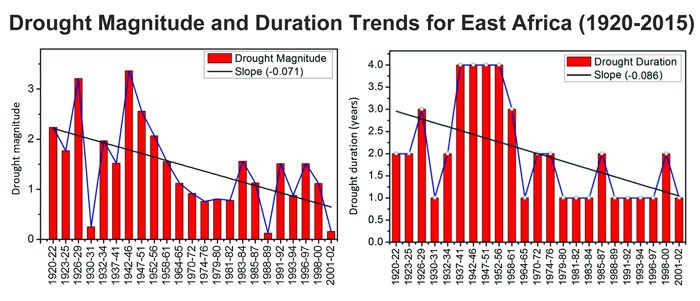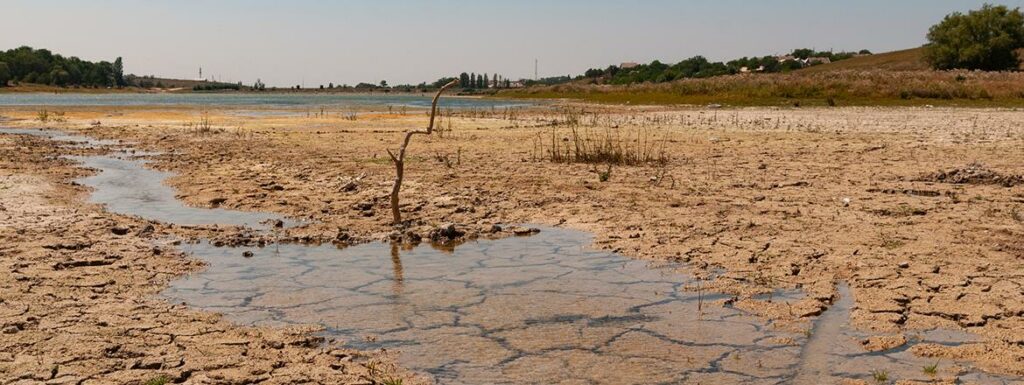From CO2Science: Droughts are a normal feature of climate capable of causing some of the most devastating natural disasters. And according to climate alarmist theory, such extreme weather events should be increasing in response to so-called CO2-induced global warming. But are they? Instead of increasing over the past century, the data show that drought magnitude and duration in East Africa have actually declined.
Paper reviewed: Kalisa, W., Zhang, J., Igbawua, T., Ujoh, F., Ebohon, O.J., Namugize, J.N. and Yao, F. 2020. Spatio-temporal analysis of drought and return periods over the East African region using Standardized Precipitation Index from 1920-2016. Agricultural Water Management 237: 106195.
Are droughts increasing in response to rising CO2 levels? The investigative work of Kalisa et al. (2020) provides an answer to that question -- at least for the region of East Africa. Publishing their research in the scientific journal Agricultural Water Management, the team of seven researchers conducted a spatio-temporal analysis of drought for eight East African countries: Ethiopia, Kenya, Rwanda, Uganda, Tanzania, Burundi, Somalia and South-Sudan. The analysis was completed using precipitation data for the study area archived by the Climate Research Unit of the University of East Anglia, UK, which data were subjected to a series of statistical analyses to discern the presence or absence of drought trends over the period 1920-2016. The relevant findings of the analysis are presented below.
With respect to precipitation anomalies, Kalisa et al. report there were “a total of 41 wet years and 46 dry years” in the record. However, there was little visual indication of any long-term trend in drought in these data. Subsequently, the authors further analyzed their data to produce a record of both drought magnitude and drought duration, which records are illustrated in Figure 1. Calculated as the cumulative of Standard Precipitation Index (SPI) values over drought months, and displayed as a positive value, Figure 1 (left panel) reveals that drought magnitudes have decreased over time. Similarly the duration of droughts (Figure 1, right panel) has also declined. Not surprisingly, spatial trends in drought across the region revealed “about 28, 22 and 50% of the SPI indicated spatial increase, no change and decrease in SPI trends respectively over the study area from 1920 to 2015.”
And thus we have our answer. Instead of increasing over the past century, the data show that drought magnitude and duration in East Africa have actually declined.

Figure 1. East Africa drought magnitudes (left panel) and drought durations (right panel) over the period 1920-2015. Source: Kalisa et al. (2020).


